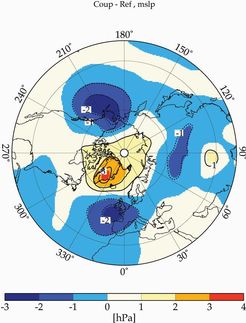U of T chemistry discovery brings organic solar cells a step closer
Advertisement
Inexpensive solar cells, vastly improved medical imaging techniques and lighter and more flexible television screens are among the potential applications envisioned for organic electronics. Recent experiments conducted by Greg Scholes and Elisabetta Collini of University of Toronto's Department of chemistry may bring these within closer reach thanks to new insights into the way molecules absorb and move energy. Their findings will be published in Science.
The U of T team - whose work is devoted to investigating how light initiates physical processes at the molecular level and how humans might take better advantage of that fact - looked specifically at conjugated polymers which are believed to be one of the most promising candidates for building efficient organic solar cells. Conjugated polymers are very long organic molecules that possess properties like those of semiconductors and so can be used to make transistors and LEDs. When these conductive polymers absorb light, the energy moves along and among the polymer chains before it is converted to electrical charges.
"One of the biggest obstacles to organic solar cells is that it is difficult to control what happens after light is absorbed: whether the desired property is transmitting energy, storing information or emitting light," explains Collini. "Our experiment suggests it is possible to achieve control using quantum effects, even under relatively normal conditions."
"We found that the ultrafast movement of energy through and between molecules happens by a quantum-mechanical mechanism rather than through random hopping, even at room temperature," explains Scholes. "This is extraordinary and will greatly influence future work in the field because everyone thought that these kinds of quantum effects could only operate in complex systems at very low temperatures," he says.
Scholes and Collini's discovery opens the way to designing organic solar cells or sensors that capture light and transfer its energy much more effectively. It also has significant implications for quantum computing because it suggests that quantum information may survive significantly longer than previously believed.
In their experiment, the scientists used ultrashort laser pulses to put the conjugated polymer into a quantum-mechanical state, whereby it is simultaneously in the ground state and a state where light has been absorbed. This is called a superposition state or quantum coherence. Then they used a sophisticated method involving more ultrashort laser pulses to observe whether this quantum state can migrate along or between polymer chains. "It turns out that it only moves along polymer chains," says Scholes. "The chemical framework that makes up the chain is a crucial ingredient for enabling quantum coherent energy transfer. In the absence of the chemical framework, energy is funneled by chance, rather than design."
This means that a chemical property – structure - can be used to steer the ultrafast migration of energy using quantum coherence. The unique properties of conjugated polymers continue to surprise us," he says.
Other news from the department science
These products might interest you
Most read news
More news from our other portals
See the theme worlds for related content
Topic world Sensor technology
Sensor technology has revolutionized the chemical industry by providing accurate, timely and reliable data across a wide range of processes. From monitoring critical parameters in production lines to early detection of potential malfunctions or hazards, sensors are the silent sentinels that ensure quality, efficiency and safety.

Topic world Sensor technology
Sensor technology has revolutionized the chemical industry by providing accurate, timely and reliable data across a wide range of processes. From monitoring critical parameters in production lines to early detection of potential malfunctions or hazards, sensors are the silent sentinels that ensure quality, efficiency and safety.






























































